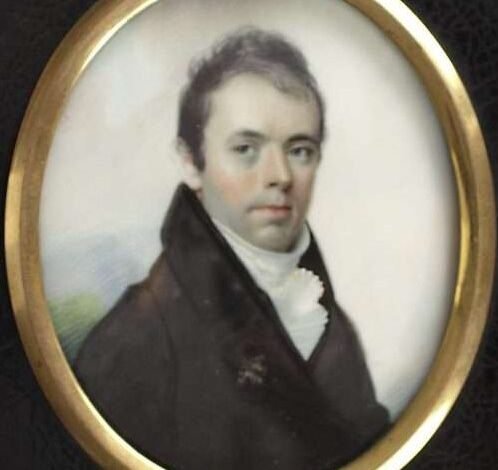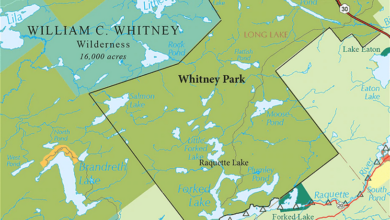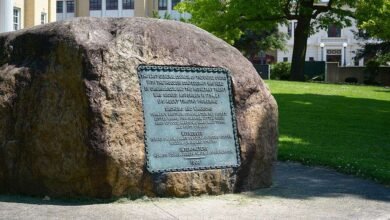Rensselaer County’s John Woodworth: New York’s 7th Attorney General


 New York State’s seventh Attorney General was John Anthony Woodworth, a native of Rensselaer County. Born November 12, 1768 in Schodack, he graduated from Yale in 1788, and studied law in the Albany office of John Lansing, Jr., who later became Chancellor of New York.
New York State’s seventh Attorney General was John Anthony Woodworth, a native of Rensselaer County. Born November 12, 1768 in Schodack, he graduated from Yale in 1788, and studied law in the Albany office of John Lansing, Jr., who later became Chancellor of New York.
He was a member of the Woodworth political family and was married to Catharine Westerlo (1778–1846, sister of Rensselaer Westerlo, and half-sister of Stephen Van Rensselaer III).
He was admitted to the bar at the first session of the Court of Common Pleas held in Troy, New York, in 1791 and set up a law office in Troy. He was appointed Loan Commissioner in 1792 and Surrogate of Rensselaer County from in 1793. He was postmaster of Troy in 1797-98.
He was the Democratic-Republican nominee for New York’s 7th congressional district in 1796, but lost to the Federalist incumbent John Evert Van Alen (1749-1807). The following year he successfully represented the defendant, Caulkins, in the landmark breach of promise case, Johnson v. Caulkins.
In Troy on July 9, 1797, Miss Johnson and Mr. Caulkins agreed to marry. Shortly afterward, Caulkins left Troy to travel to the West Indies. On April 4, 1798, Johnson gave birth to a child. Upon his return to Troy in June of that year Caulkins acknowledged paternity.
In July, Caulkins reaffirmed his promise to marry Johnson, stating that he would do so upon his return from a trip to New London, CT. When the marriage did not take place, Johnson sued Caulkins for breach of promise to marry.
At trial, the court admitted evidence of Miss Johnson’s conduct and reputation prior to August 1798 but excluded testimony John Woodworth, counsel for Caulkins, sought to offer to prove Johnson’s allegedly licentious conduct with other men subsequent to July 1798. The verdict was in favor of Johnson, and she was awarded damages of $1,000.
Caulkins then applied to the Supreme Court of Judicature for a new trial on the ground that he ought to have been permitted to prove acts of licentiousness by Johnson without being restricted to the period prior to July 1798.
Justice Egbert Benson wrote the Court’s opinion, in which Justices Jacob Radcliff, James Kent, and Morgan Lewis concurred. The Court ordered a new trial, holding that Caulkins ought to have been permitted to show plaintiff’s general character “as to sobriety and virtue,” without any time limitation because an action for breach of promise to marry is, in part, based upon loss of reputation, and her reputation must depend upon her general conduct after, as well as before, the breach.
Chief Justice John Lansing dissented, stating that his impression was that Caulkins had abandoned Johnson as evidenced by his absenting himself contrary to his agreement, and he ought not to be permitted to avail himself of subsequent circumstances that arose as a result of his own bad conduct.
Politician, Attorney General & Legal Scholar
Although he had been defeated in the Congressional election of 1796, Woodworth was made a presidential elector for Thomas Jefferson and Aaron Burr during the Election of 1800. Woodworth represented Rensselaer County in the New York State Assembly in 1803.
While serving in the Assembly he ran as the Democratic-Republican caucus’s nominee for U.S. Senator from New York (Senators were then appointed by State Legislatures). He was narrowly defeated by Theodorus Bailey of Poughkeepsie (1758 – 1828) who was also supported by the Federalists.
He resigned as Surrogate of Rensselaer County in 1804, and then served for four years as Attorney General of the State of New York (1804-1808) while simultaneously serving in the State Senate (1804-1807).
In 1811 Woodworth and William P. Van Ness were directed “to arrange the laws of a general and permanent nature systematically in divisions under proper heads, with such marginal notes as appeared to be best calculated for public information.”
Laws of New York was published in 1813. The work was described as “among the most valuable expositions of the laws of this State; they oftentimes, by enumerating the various English and Colonial acts which contained like provisions, embrace a succinct history of the statutes to which they refer. Even at the present day the history of many legislative measures may be more easily gathered from this revision than from any other single work; and it remains a profound example of faithful professional service.”
In 1819, John Woodworth was appointed an Associate Justice of the New York State Supreme Court of Judicature.
He was a delegate to the 1821 Convention to revise the New York Constitution and, under the terms of that Constitution, was required to leave office on January 29, 1823.
Under the newly-adopted Constitution, he again became a member of the Supreme Court of Judicature on February 6, 1823, and served until 1828.
Justice Woodworth wrote the Court’s opinion in Jackson ex dem. People v Lervey (1826) a case about whether land granted by the State to a soldier who fought in the Revolutionary War could be transferred to his son who was born in slavery.
Jackson ex dem. People v Lervey
Peter Stringerland, a soldier who fought and died in the Revolutionary War, was survived by his wife and child. In 1790, legislation was enacted that granted land to those who had served in the Revolutionary Army, and the patent to Lot 26 in the Township of Locke, in Cayuga County, was deemed vested in Peter Stringerland as of March 27, 1783.
Legislation enacted in 1803 vested the interest of soldiers who had died before 1783 in their legal heirs, who, in this instance, was Stringerland’s son.
Stringerland’s son sold his father’s 50 acres of land to Lervey, but the Attorney General sued, claiming that the lands had escheated to the State (escheatment is a common law doctrine that vests the property of a person who dies without heirs in the State).
Because Peter Stringerland had been a slave prior to his service in the Revolutionary War and his wife had also been a slave, their marriage was not legally recognized. Peter’s son was thus considered then illegitimate, and could not inherit the land under the common law.
The case came before the Supreme Court of Judicature in February 1826. Attorney General Samuel Talcott represented the State and John Porter was counsel for Lervey.
The Court held in favor of Lervey and, in his opinion, Justice Woodworth stated that “The circumstances of the case are peculiar and require a liberal construction of the grant [of the land]. The gratitude of the country was due to the defenders of our rights in the revolutionary struggle. It was directed to the men who had rendered service whether citizens, aliens, or slaves.”
Justice Woodworth then examined the statute of 1809 that legalized all marriages and births of slaves, and ruled that based upon the retroactive clause contained in the act, Peter Stringerland’s marriage was valid and his child was legitimate.
Because, in the 1790 enactment, the Legislature intended to permit the heirs of those who served in the Revolutionary War to inherit the land, it was as if no disability (slavery) had existed with respect to Peter Stringerland’s son, and Lervey took good title to the land.
NYS Supreme Court & Later Life
Justice Woodworth served on the New York Supreme Court until 1828 when he reached the age of 60, the mandatory retirement age under the 1821 Constitution.
Woodworth’s legacy is marked not only by his significant legal contributions but also by his dedication to public service. He also served as a Regent of the University of the State of New York.
He continued to practice law, and authored Reminiscences of Troy from its Settlement in 1790 till 1807 (Albany, 1855). He died on June 1, 1858 in Albany, and was buried in Albany Rural Cemetery.
This essay is one of a series by the Historical Society of the New York Courts on the history of New York’s Attorneys General. You can read them all here.
The Historical Society of the New York Courts brings together judges and lawyers to preserve, protect, and promote the legal history of New York — how it works to promote democracy, ensure justice, and promote the rule of law. Learn more about the Society and support their efforts by becoming a member or donating here.
Illustration: The only known extant portrait of Judge John Woodworth, ca. 1807 (courtesy Albany Institute of History and Art).
Source link





